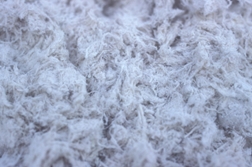 Consumer groups say that, rather than the EPA “toughening oversight” it should be looking at ways to ban asbestos entirely, like almost every other country on the planet has done. Even people at the EPA have objections to this rule. The New York Times (Aug 10, 2018) reported conflict between upper management and EPA scientists: In an internal email, Sharon Cooperstein, an E.P.A. policy analyst, said “The new approach raises significant concerns about the potential health impacts,” and, along with a veteran E.P.A. scientist and a longtime agency attorney, said “the proposal as designed left open the possibility that businesses could start using asbestos in some cases without getting the government’s assessment, putting the public at risk.”
Consumer groups say that, rather than the EPA “toughening oversight” it should be looking at ways to ban asbestos entirely, like almost every other country on the planet has done. Even people at the EPA have objections to this rule. The New York Times (Aug 10, 2018) reported conflict between upper management and EPA scientists: In an internal email, Sharon Cooperstein, an E.P.A. policy analyst, said “The new approach raises significant concerns about the potential health impacts,” and, along with a veteran E.P.A. scientist and a longtime agency attorney, said “the proposal as designed left open the possibility that businesses could start using asbestos in some cases without getting the government’s assessment, putting the public at risk.”SNUR: Significant New Use Rule
On June 1, the EPA enacted a “Significant New Use Rule, commonly known as SNUR. It is intended to block industry from initiating new uses of a toxic substance such as asbestos without notifying the EPA, which could then regulate or deny those requests.
Donald Trump and Asbestos Industry
Bill Walsh, board president of the environmental advocacy group Healthy Building Network is also critical of this new regulation. He told Fast Company that “The Trump administration rewrote the rules to be dramatically less protective of human health … experts who have looked at [Snur] have said that in the end, it pretty much gives EPA discretion to do whatever it wants…The EPA’s failure to further regulate asbestos continues to provide a green light for its continued use in the U.S., even as it has been curtailed overseas.”
Asbestos Environmental Pollution
The Healthy Building Network (HBN) warns that the continued use of mercury and asbestos in the supply chain of polyvinyl chloride (PVC), and other chlorine-based products, is a source of environmental pollution. HBN surveyed the 86 largest chlor-alkali and 56 largest PVC plants in the Americas, Europe and Africa and found that 32 chlor-alkali plants still use mercury and/or asbestos to produce chlorine. Chlorine-based production is responsible for some 300 tons of asbestos waste a year in the US, it said.
In the past, HBN and other not-for-profit organizations have tried to ban asbestos use from the chlor-alkali industry, which is the only industry in the US to still use asbestos—it imports 480 tons of asbestos annually. Walsh says that “Most of that chlorine is used to make plastics, and the largest single use of chlorine is for PVC or vinyl plastics,” which is found in many building materials, from pipes to tiles to flooring, and more.
READ MORE ASBESTOS MESOTHELIOMA LEGAL NEWS
Asbestos Mesothelioma
Karen Selby is a registered nurse and patient advocate for the Mesothelioma Center. She told Salon.com that the EPA’s “seemingly more relaxed approach to asbestos” is concerning. She is seeing more young women and children diagnosed with mesothelioma who have “no idea how early or when they were exposed to asbestos.” Mesothelioma can develop when asbestos fibers are inhaled and once a fiber is lodged on the lung, it could potentially cause scarring or cancer. “Anyone is subjected to it,” Selby added. Asbestos kills at least 12,000 to 15,000 Americans a year, states Asbestos Nation, and approximately 107,000 people worldwide die each year because of asbestos-related diseases, according to the World Health Organization.
